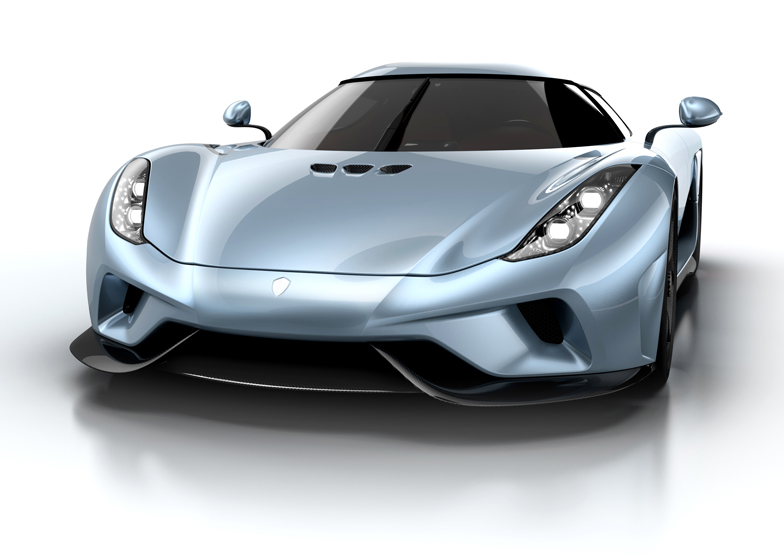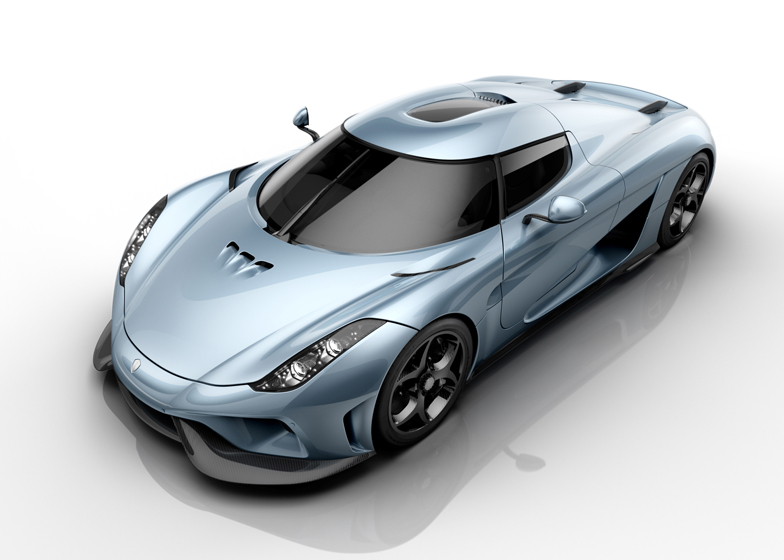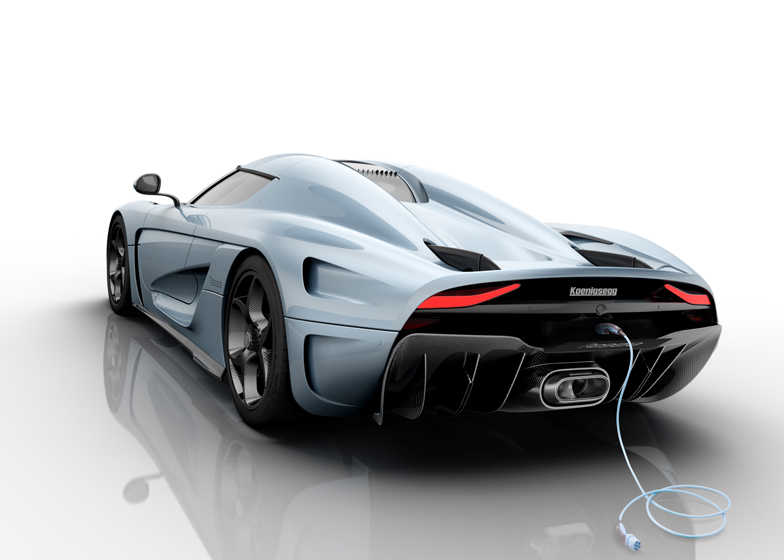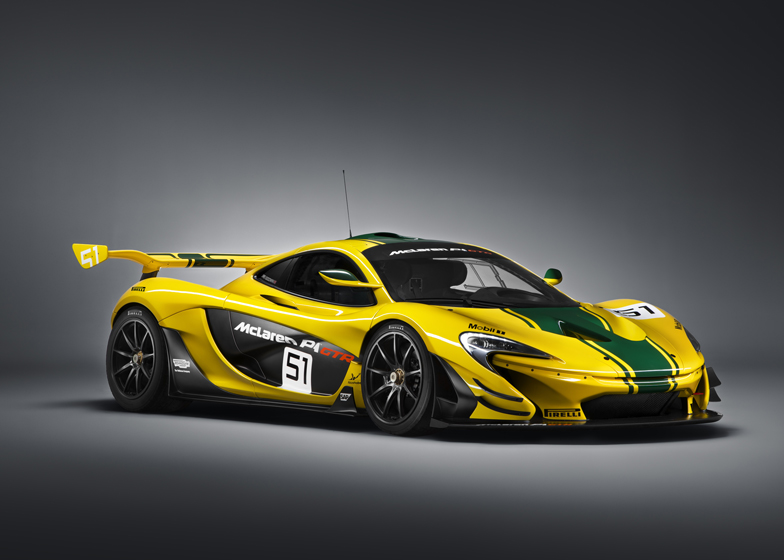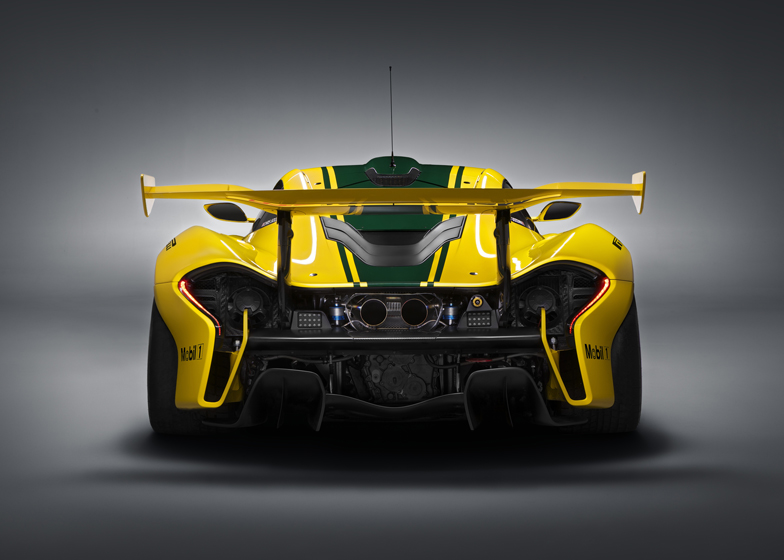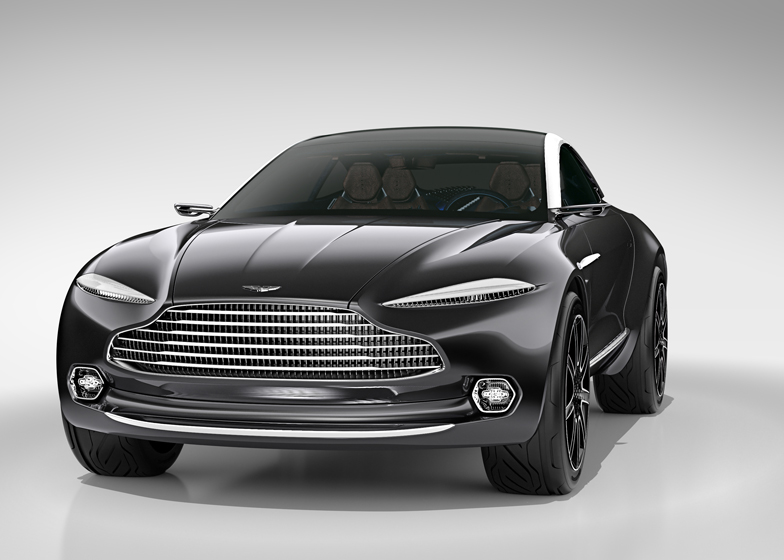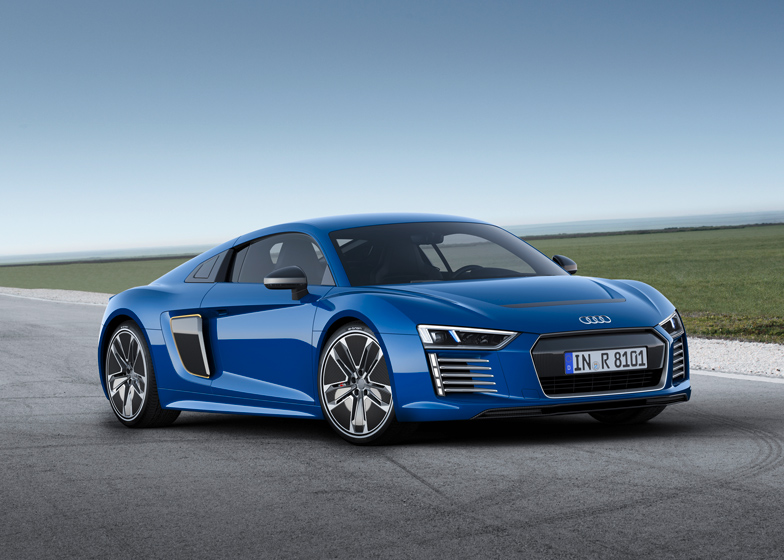Geneva Motor Show 2015: car manufacturers are helping to change outdated perceptions of hybrid and electric vehicles by using the technologies in faster, sleeker cars, finds Dezeen's motoring correspondent Ross Bryant.
Held in Switzerland each March, the Geneva Motor Show is one of the most significant events in the car industry calendar, with international brands unveiling their latest models and concept designs for the years ahead.
It is often the best place to discover new technologies and design approaches, but this year the focus was firmly on an existing technology – the electric motor.
A range of supercar brands showcased souped-up hybrid designs, combining an electric motor with a petrol engine.
These powerful vehicles are a far cry from the "slow and boring" stereotype once associated with hybrid cars, according to Paul Mackenzie, chief of development at British supercar brand McLaren.
"It's validated hybrid as being acceptable – it's a performance thing, not just a boring thing," Mackenzie told Dezeen.
Others, like Audi, focused on converting their faster models to electric power with long-lasting batteries, while a number of concepts were unveiled for a fully-electric future.
Below are six of the best high-performance hybrid or all-electric vehicle designs shown at this year's Geneva Motor Show:
Koenigsegg Regera
Swedish manufacturer Koenigsegg unveiled its plug-in hybrid supercar, describing it as "the fastest accelerating, most powerful production car ever".
Every openable body component on the Regera can be operated automatically via a remote device, changing the vehicle into a shape-shifting "transformer", according to the company.
"The Regera is the first car in the world that operates all body closures completely automatically," explained Koenigsegg. "The spectacle to open and close the entire car simultaneously from the remote or smartphone, truly turns the Regera into a transformer".
The Regera supercar uses a downsized version of the company's petrol-powered engine, but generates additional drive from three electric motors.
These motors deliver power to a group of components that drive the vehicle's wheels, known as a drivetrain.
The battery pack can be topped up via a plug as well as through a process called regenerative braking, which converts the energy produced as a vehicle is forcefully slowed down into stored electricity.
By combining electrical and combustion power, the Koenigsegg Regera can go from zero to 248 miles per hour (mph) in less than 20 seconds.
McLaren P1 GTR
British supercar brand McLaren also showcased its updated hybrid technology in Geneva as it debuted a racetrack-only version of its P1 road car.
The shape of McLaren's latest racing car was designed to cut through air efficiently, and features a front-mounted splitter – or wing – as well as a large wing at its rear to manage airflow and improve overall speed and handling.
Like the Koenigsegg Regera, a petrol engine produces most of the P1 GTR's power, which is supplemented by an electric motor.
"We use the electric motor to give us good fuel efficiency, lower emissions and to reduce turbo lag," explained McLaren's P1 development chief Paul Mackenzie.
Turbo lag is the time between the demand for an increase in power and the reaction of the car's turbochargers, which increase an engine's power and performance by forcing extra air into the combustion chamber – a process that takes a small amount of time.
As the stored power produced by the electric motor on the P1 GTR is available immediately, turbo lag on the vehicle is reduced.
"For us, the hybrid system is a technology demonstrator that shows what is possible," added Mackenzie.
Aston Martin DBX Concept
Designed as an exploration of the future of luxury travel, Aston Martin's all-electric DBX Concept doesn't have an engine compartment, freeing up space for the interior design.
"On the inside, we're greatly affected by the all-wheel drive electric package of this vehicle," Aston Martin interior design chief Matt Hill told Dezeen. "It gives us a lot of freedom to maximise actual space and also play with perceived space."
The exterior is made up of machined aluminium with visible milling lines and features a wide grille at its front that sits below slender headlights.
Powered by four electric motors positioned close to each wheel to maximise performance, the vehicle also features "drive-by-wire" electric steering.
This replaces the usual heavy and bulky mechanical linkages used to turn the vehicle in either direction with electric wires that send instructions from the wheel to the car's computer control centre. It is designed to help improve steering response times as well as removing the need for a steering column, creating even more usable interior space.
Magna Steyr's Mila Plus
Engineering firm Magna Steyr unveiled its plug-in hybrid sports concept car to showcase new technologies available to the automotive industry.
"It was important for us to show the environmental friendliness of the car in the form language," explained exterior designer Frank Lütjen to Dezeen. "That's why we have used clean lines over the glass roof of the car and along its sides."
Integrating a high-voltage battery – its heaviest component – into a lightweight aluminium frame of interlocking struts allows weight to be distributed evenly, meaning the vehicle's manoeuvrability and handling isn't compromised by the hybrid system's mass.
Plastic body panels clad the car's aluminium chassis and the firm also developed a flexible multi-material skin to finish the exterior. These lightweight materials further offset the weight of the hybrid package.
Audi R8 e-tron
German manufacturer Audi unveiled an all-electric version of its R8 supercar in Geneva called the Audi R8 e-tron.
The R8 e-tron was designed to look similar to its petrol-powered R8 counterpart, but features some styling differences such as trim fitted to where the exhausts would usually be and a smaller rear spoiler.
It is powered by two electric motors fitted to the rear axle, which produce enough power to deliver a top speed of 155 mph.
The battery pack is positioned down the centre of the car, branching out behind and under the seats to form a T-shape.
The result is a lower centre of gravity as well as effective weight distribution, which keeps the vehicle balanced around corners at speed.
"To be honest, the handling is a little better than the current R8 because of the lower centre of gravity," R8 e-tron project manager Thomas Kubbe explained to Dezeen. "[The battery] is a big part of the car's overall weight, and the lower the disposition the better the handling is."
The potential distance covered between battery charges is 276 miles and the car can be fully charged in two hours via a rapid charging point.
Bentley EXP 10 Speed 6
While Bentley didn't release performance figures for its hybrid sports car concept, it did state the model will challenge competitors in its class.
The "muscular" exterior shape was designed to reference aircraft fuselages and wings, according to the company, while the brand's traditional front grille has been reinterpreted to be much larger, squarer and positioned lower compared to other models.
"Copper elements are used as accents to both exterior and interior features to highlight the performance hybrid potential," explained a statement from Bentley. "It's a bold vision for a brand with a bold future."

